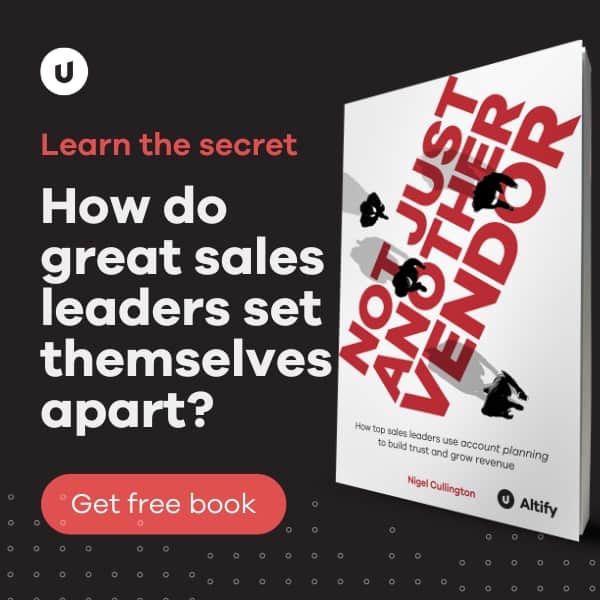In the first blog in the series we outlined what a Relationship Map was and how to gain buy in. Here we get inside the mind of the customer as a key element of the relationship strategy development.
How Do They Think?
Once you have determined ‘Who matters?’’ by assessing their Level of Influence, you next want to get a sense of the individual. Once you have a better understanding of a company’s culture – as demonstrated by the aggregate behavior and perspectives of the individuals you engage with – your approach will be much more informed. Before you can change someone’s mind, you have to look inside it.
To start, you’ll need a framework to know what to look for when assessing an individual’s personal perspective. As you learn about each of the individuals on the buying committee, the framework provides you with a guide to determine what that means to your relationship strategy. You should determine Decision Orientation and Adaptability to Change from the personal perspective of each of the individuals.
Decision Orientation: The view you see is always dependent on where you are standing. How people make up their minds, come to a conclusion, and make a decision is shaped by their backgrounds, experiences and knowledge. In business, decision orientation is determined by the roles people play in a company as well as their personal backgrounds. Understanding an individual’s decision orientation is critical to being able to relate to them, and build sustainable business relationships.
There are four types of decision orientation you should consider: Financial, Technical, Relationship and Business:
- A Financial orientation implies a primary focus on price, cost, and economics. While your product must be viable, numbers and negotiations will be key.
- A Technical focus is about product functionality and capability. Such individuals are often analytical and detail-oriented. Product demonstrations, benchmarks, and careful deliberation will be key.
- Someone with a Relationship orientation believes they are forming a business partnership and that you and your company are important to them. While your product must be viable, support, trust, effort, and responsiveness will be important.
- A Business orientation takes a big picture view and this person can properly balance the technical, financial, and relationship issues. Their vision often extends beyond their company to include their customers, and their competition.
If you want to develop a strong relationship with your customer so that you can work collaboratively with them, knowing their inherent decision orientation bias is essential. That knowledge helps you understand what’s important to them and guides how you present value.
Adaptability to Change: Merriam Webster defines change as: “to make different.” It also categorizes the word ‘change’ as a verb. This of course implies motion, and we know that change is constant in the world of business. When you are solving a business problem for a customer you are in fact facilitating or creating change and, for your customer, that entails new actions, objectives and processes for a group or team of people. Each of the individuals with whom you are engaging will respond differently. The more you understand their personality the better you will understand what motivates them and whether the fear of change will be a barrier to progress.
As with Decision Orientation, having a framework to model Adaptability to Change helps categorize the people with whom you are working, and guides you to take the right actions to help them on their change journey:
- Innovators love to be first with the latest ideas. They are attracted to new solutions and products and will experiment with the solution. They are enthusiasts for NEW. But, innovators, while usually influential, rarely have a budget. They can also be fickle – looking for instant gratification – and if you don’t deliver quickly, they will lose interest and move on to the next shiny object.
- Visionaries are revolutionaries. They expect to achieve a significant competitive advantage by being among the first. Visionaries are early adopters and often have funds that they can allocate to buy new solutions or products. However, often they will demand special modifications or improvements to a new solution, tailored to their specific needs.
- Pragmatists, sometimes called the ‘early majority,’ believe in evolution not revolution. With a low risk threshold, they adopt products and services with a proven track record of success including references from people they trust.
- Conservatives are pessimistic. They tend to question gaining value from investments in new solutions and to change only when pressed – when the only alternative is to be left behind.
- Laggards are the last to implement new solutions. They generally will do so only when there is no alternative. Laggards tend to doubt that new solutions or products will provide any value. I’d recommend selling around them if possible.
The ability to categorize each buyer into one of these discrete groups may seem difficult at first but should become obvious as you examine their:
- Track record for implementing new solutions
- Conversations with you and your team
- Interactions with your peers
- Office / technology environment.
Buyers’ Adaptability to Change
By understanding a buyer’s adaptability to change, you will know what you should emphasize and where to seek support if your proposition doesn’t quite gel.
In the next post, we talk about how to assess Your Current Relationship, so that you know where you are starting from.


